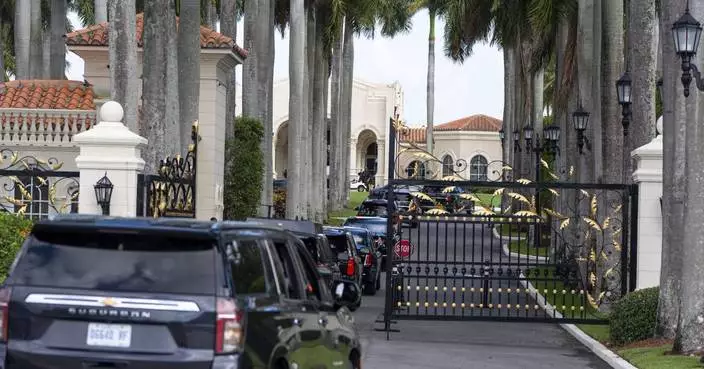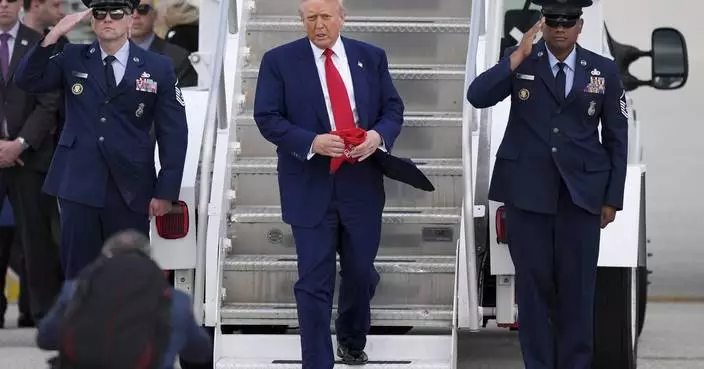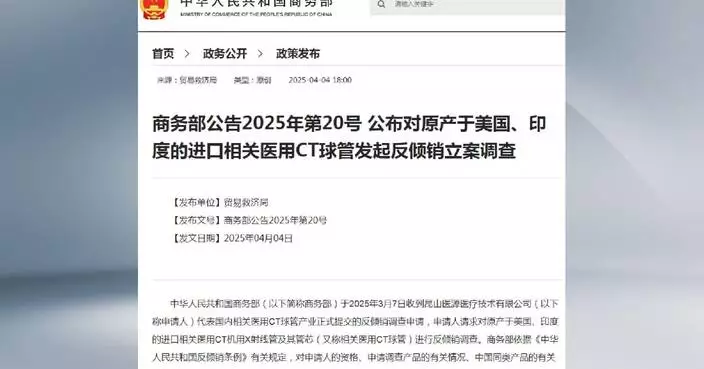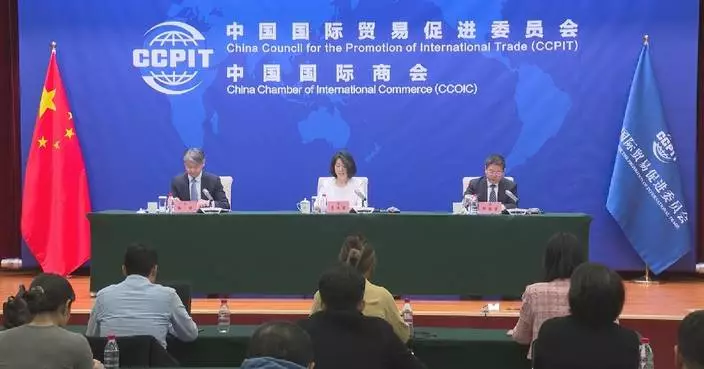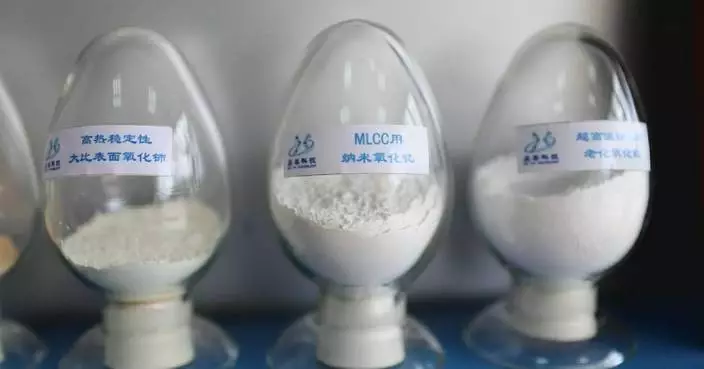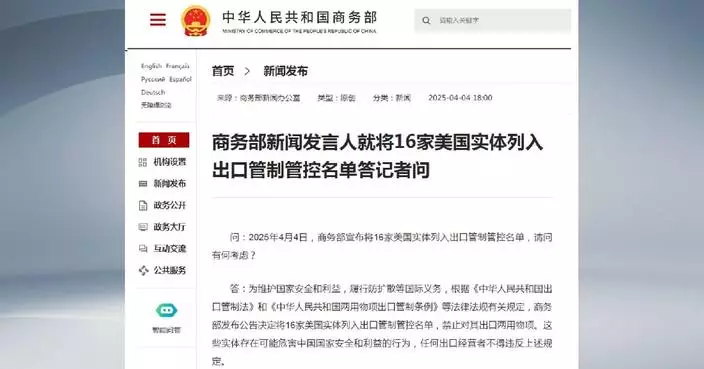WASHINGTON (AP) — Consumers stepped up their spending at retail stores last month, providing a boost to the economy in the early phases of the winter holiday shopping season.
Retail sales rose 0.7% in November, the Commerce Department said Tuesday, a solid increase and higher than October's 0.5% gain. Sales jumped 2.6% at auto dealers, driving most of the gain. Some of that demand likely reflected a need for new cars in parts of the southeast slammed by Hurricane Helene in October, as well as healthy incentives provided by car dealers. Big discounts at many retail chains also attracted some consumers.
The boost in spending underscores that the economy is still growing at a healthy pace even with higher interest rates, a trend that could cause the Federal Reserve to lower borrowing costs more slowly next year than they have previously signaled. The Fed will announce its latest rate decision Wednesday.
At the same time, there were some signs of consumer caution, as sales at grocery stores, clothing shops, and restaurants fell. Outside of car dealers and online retailers, sales gains were modest.
“We ultimately expect this will be a decent holiday sales season for retailers,” Tim Quinlan, an economist at Wells Fargo, said in a note to clients. “It’s not going to knock anyone’s socks off in the wake of record pandemic gains, but continued consumer momentum means it’s unlikely to be overly weak either.”
The economy expanded at nearly a 3% annual pace in the July-September quarter and some economists forecast steady growth in the final three months of this year as well. There are some signs of sluggishness in the job market, as hiring has weakened since early this year, but layoffs are also relatively rare and the unemployment rate is at a low 4.2%. Paychecks are growing a solid 4% pace, on average nationwide, which is modestly faster than inflation and helps fuel more spending.
Sales rose modestly at stores selling furniture, electronics, and home and garden supplies. Since the retail sales report isn't adjusted for inflation, some of the increase reflects higher prices. Sporting goods stores reported a 0.9% gain. Sales at online retailers jumped 1.8%.
Spending at restaurants and bars, meanwhile, dropped 0.4%, a sign that consumers did pull back in one discretionary category. Grocery store sales also dipped 0.2%.
On Wednesday, the Fed is expected to cut its key rate for a third time this year, after a big half-point cut in September and a quarter-point last month. But Fed officials, led by Chair Jerome Powell, are also expected to signal that they may reduce their rate only two or three times next year, leaving it far above its pre-pandemic level, when rates on mortgages, auto loans, and credit cards were much slower.
The retail sales report comes as retailers are stepping up deals and other perks to get shoppers into their stores for the crucial final stretch before Christmas.
Analysts envisioned a solid holiday shopping season, though perhaps not as robust as last year’s, with many shoppers under pressure from still-high prices despite the easing of inflation. Overall, retailers had a decent start to the unofficial kickoff to the holiday shopping period despite lots of discounts and sales that started as early as October.
Adobe reported earlier this month that “cyber week” — the five-day period from Thanksgiving to Cyber Monday — brought in $41.1 billion online overall, up 8.2% from the year-ago period. Adobe expects full holiday season sales — Nov. 1 to Dec. 31 — to hit $240.8 billion, up 8.4% compared to a year-ago. And Mastercard SpendingPulse, which tracks in-person and online spending, reported that overall Black Friday sales excluding automotive rose 3.4% from a year ago.
This year, retailers are feeling more pressure since there are five fewer days between Thanksgiving and Christmas. Moreover, the presidential election caused some distraction from shopping, sending sales of general merchandise down 9% in the two weeks ended Nov. 9, according to Circana, a market research group.
Sales have been rebounding but stores will still have to make up for those losses. But there are big shopping days ahead. In the United States, the top 10 busiest shopping days account for about 30% to 40% of all holiday retail traffic, according to Sensormatic Solutions, which tracks foot traffic at retail stores. And six of the top ten busiest days during the holiday season are still ahead, including the day after Christmas, Sensormatic noted.
Spencer Jordan, senior vice president of leasing at Easton Town Center in Columbus, Ohio, said that foot traffic is unchanged from a year ago, but sales are up.
There were steady crowds over the weekend at the Newport Centre Mall in Jersey City, New Jersey, anchored by Macy’s and Kohl’s, with huge discounts being offered at a number of them.
Abraham Ferreyra and his wife purchased two coats Sunday that were on sale for $15 each and said they plan to cut spending on gifts.
“We have a mortgage to pay,” he said. “So we can’t be giving too much.”
This story has been updated to correct that six of the top busiest shopping days during the holiday season are ahead, not five.
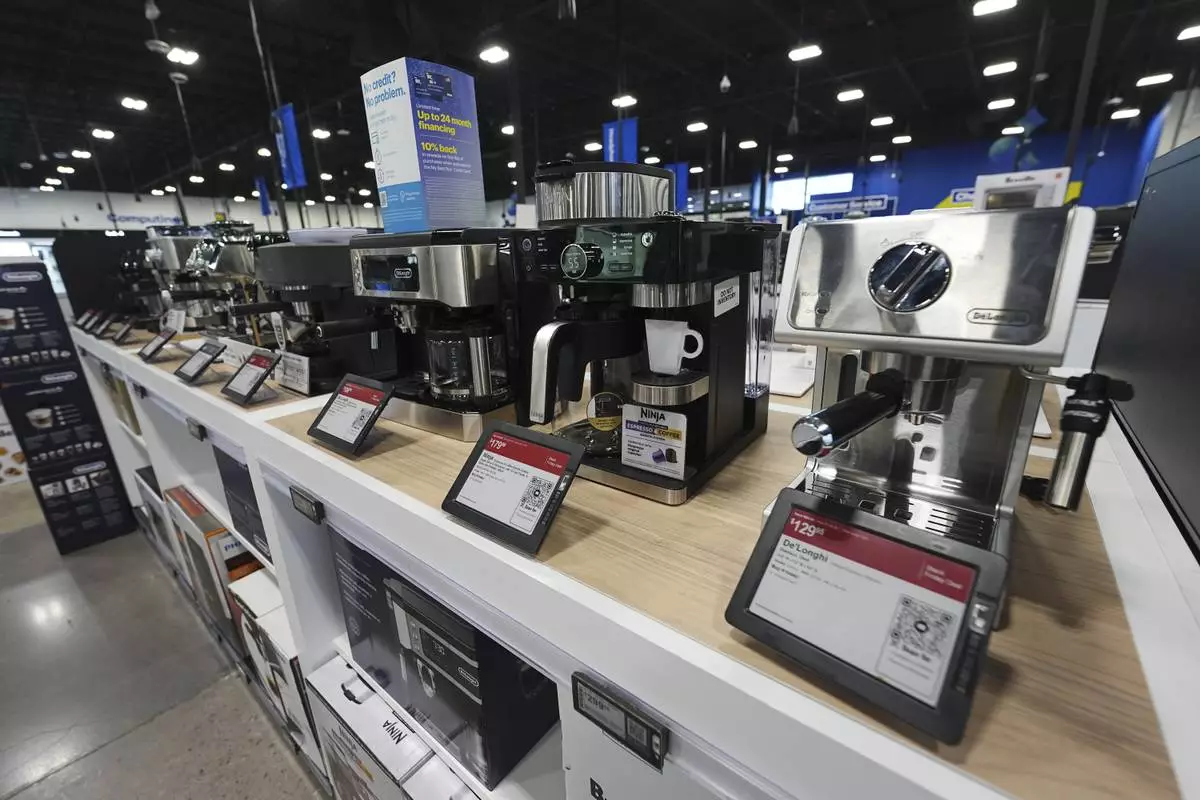
FILE - Coffee makers sit on display in a Best Buy store Nov. 21, 2024, in south Denver. (AP Photo/David Zalubowski, File)
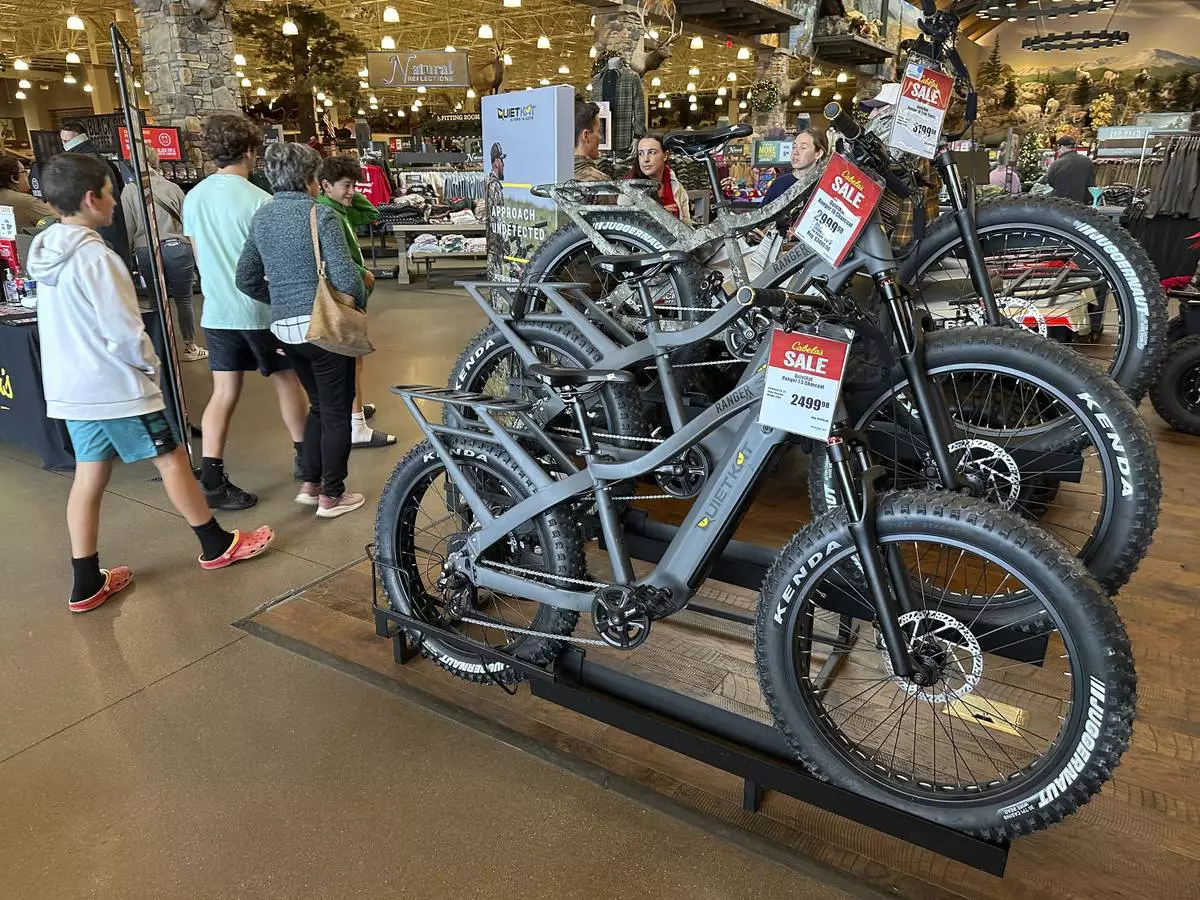
Shoppers pass by electric bicycles on display in a Cabela's sporting goods store Sunday, Dec. 8, 2024, in Lone Tree, Colo. (AP Photo/David Zalubowski)
WASHINGTON (AP) — As stock markets tumble in the aftermath of President Donald Trump's sweeping tariffs, Republicans in Congress were watching with unease and talking of clawing back their power to levy tariffs — but almost none seemed ready to turn their words into action.
The Republican president is upending longstanding GOP principles like support for free trade, yet despite clear misgivings and a Constitutional mandate to decide tariffs, most lawmakers were not ready to cross Trump. Instead, they were focusing all their attention on advancing the president's " big, beautiful bill ” of tax breaks and spending cuts, even as tariffs — in essence, import taxes — threatened to raise consumer prices across the board and push the global economy into a recession.
As the fallout from Trump's announcement reverberated around global markets, Senate Majority Leader John Thune, who has made it clear he is no fan of tariffs, told reporters that he would give Trump "the benefit of the doubt” in hopes that the announcement was just a scare tactic to prod foreign leaders into negotiating better trade deals with the U.S.
“The president is a dealmaker if nothing else, and he's going to continue to deal country by country with each of them,” said Sen. John Barrasso, a Wyoming Republican who is no. 2 in GOP Senate leadership. He added that Treasury Secretary Scott Bessent had told Senate Republicans this week that the tariffs announced by Trump would be a “high level mark with the ultimate goal of getting them reduced” unless other countries retaliate.
But countries like China are already retaliating with tariffs of their own, and while the president has signaled he is open to negotiations, he was mostly sounding a defiant tone Friday, saying on social media that “MY POLICIES WILL NEVER CHANGE” while claiming that foreign investors were lining up to invest in U.S. industries. He was on the golf course Friday near his Mar-a-Lago private club in Florida.
Congress, however, was jittery.
A handful of Republicans have rebuked Trump's strategy as a foolhardy path that will burden U.S. households. Kentucky Sen. Mitch McConnell, the longtime Senate leader who was the standard-bearer for past generations of Republicans, released a lengthy statement saying, “As I have always warned, tariffs are bad policy, and trade wars with our partners hurt working people most.”
McConnell and three other Republicans joined with Democrats this week to help pass a resolution that would nullify Trump's tariffs on Canada, sending a rebuke to the president just hours after his “Liberation Day” announcement. But House Speaker Mike Johnson quickly indicated he has no interest in giving the resolution a vote.
Lawmakers' struggle to act showed the divide among Republicans on trade policy, with a mostly younger group of Republicans fiercely backing Trump's strategy. Rather than heed traditional free trade doctrine, they argue for “America First” protectionism and hope it will revive U.S. manufacturing.
Republican Sen. Josh Hawley said that workers in his home state of Missouri were “absolutely thrilled” with the tariffs. “We've been losing jobs left and right. Farmers want to see a fair deal for our products, both in Canada and in Mexico and from the (European Union)," he added.
For their part, Democrats slammed Trump's tariffs as a reckless maneuver meant to do nothing more than raise funds for the tax breaks Trump and Republicans are trying to pass.
“Why would he raise the costs on American families by $5,000, as it’s estimated? Simply because his very wealthy billionaire friends want a greater tax break,” Senate Democratic Leader Chuck Schumer said in a floor speech Friday.
Other Republicans were looking for roundabout ways to at least check the president's power on trade policy. Sen. Chuck Grassley, a senior Republican from Iowa, introduced a bipartisan bill Thursday that would require presidents to justify new tariffs to Congress. Lawmakers would then have to approve the tariffs within 60 days, or they would expire.
Although Grassley emphasized that he had long been working on the idea, the timing of the bill was notable. It gave Republicans a chance to talk about their distaste for import taxes and raised the prospect of Congress clawing back some of its power over tariffs. The Constitution gives Congress the responsibility of setting taxes and tariffs, but over the last century, lawmakers have ceded much of their power over import taxes to the president.
A handful of Republicans said they were favorable to Grassley's proposal, though the idea of directly defying Trump seemed to squelch potential for quick action.
“I don’t want to do it in a politically charged environment,” said Sen. Mike Rounds, a South Dakota Republican. “But I absolutely agree. This was set up by the Founding Fathers to be Congress’s role. And, I think we’re way past the point of what the Founding Fathers ever wanted to have happen."
Democratic Sen. Brian Schatz seized on the hesitation from Republicans, saying on social media Friday that the Senate would overwhelmingly repeal or constrain tariff authority “if every Senator voted their conscience and their state’s interest.”
“Mostly everyone hates this, they are just too afraid of the Mad King at the moment,” Schatz added.
Sen. John Kennedy, a Louisiana Republican, also predicted the bill would never pass “because of the voting requirements in the Senate.”
But he was still taking to social media to offer a folksy bit of advice: “Tariffs are like whiskey: A little whiskey, under the right circumstances, can be refreshing — but too much whiskey, under the wrong circumstances, can make you drunk as a goat.”
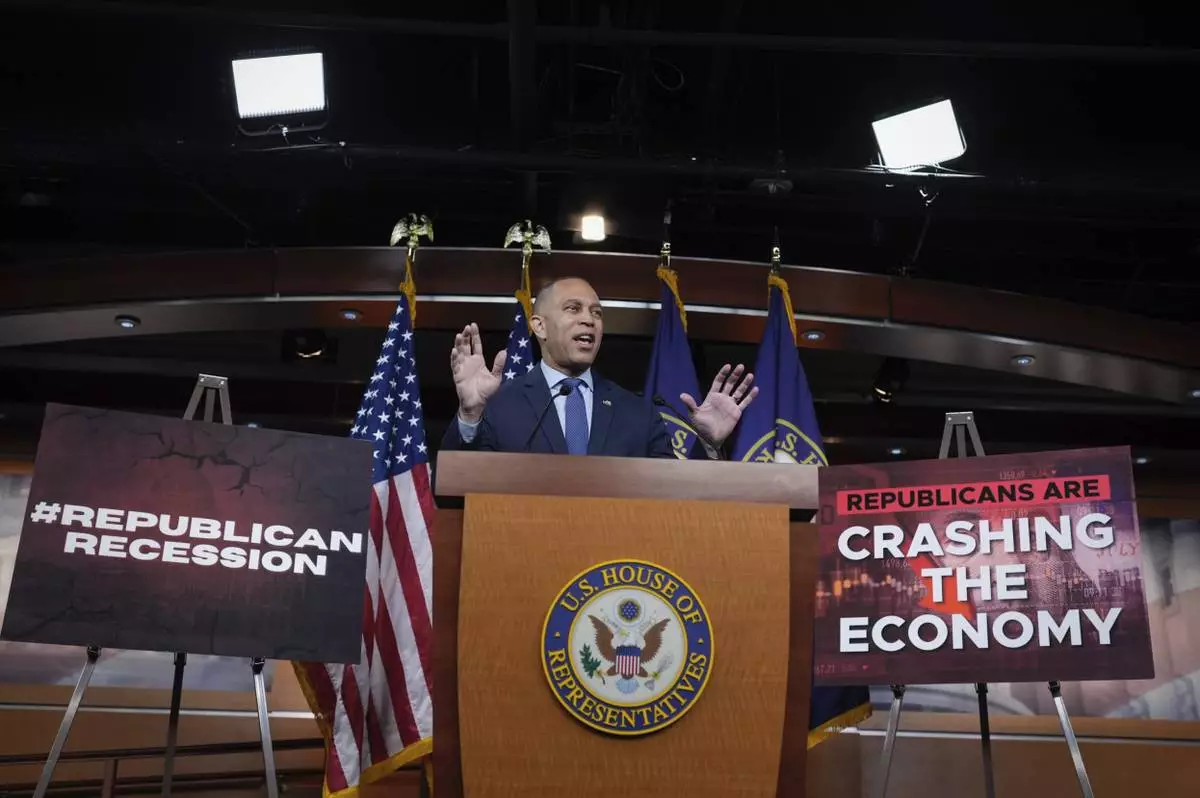
House Minority Leader Hakeem Jeffries, D-N.Y., criticizes the agenda of President Donald Trump and the tactics of billionaire Elon Musk in a pivotal Wisconsin election where Democrats won, during a news conference at the Capitol, in Washington, Wednesday, April 2, 2025. (AP Photo/J. Scott Applewhite)
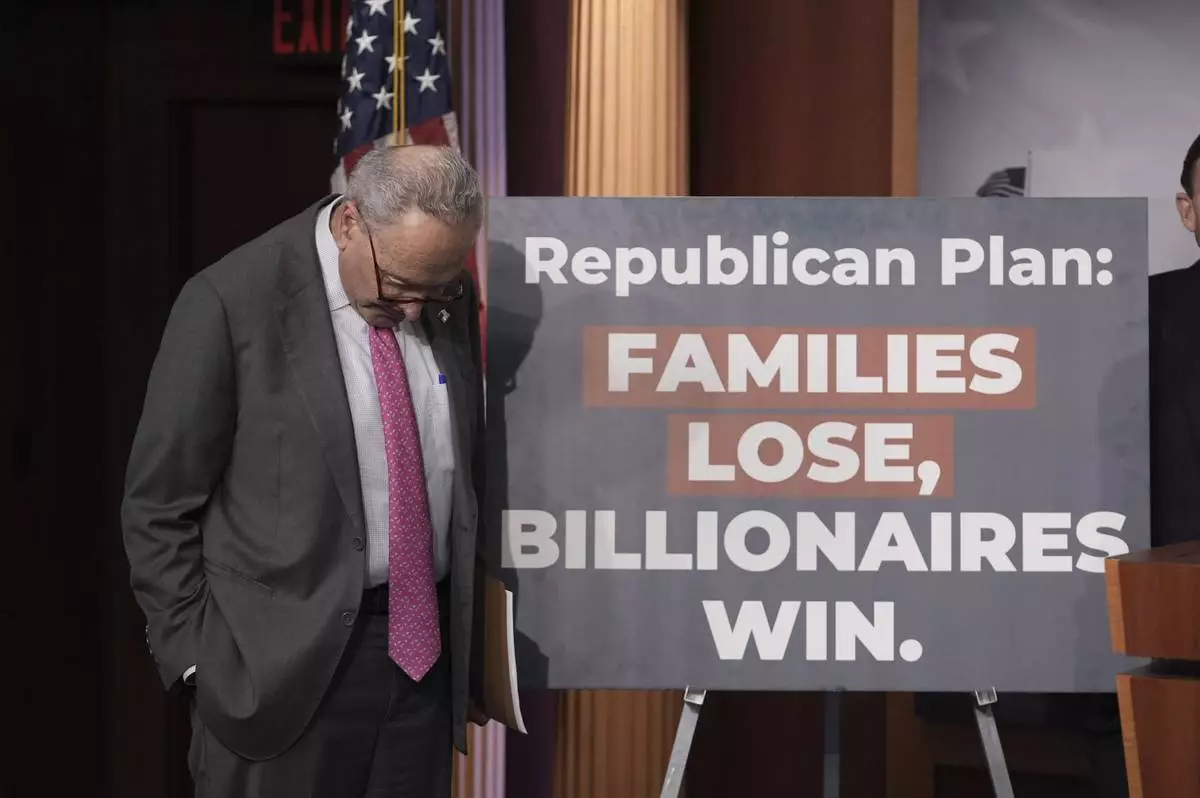
Senate Minority Leader Chuck Schumer, D-N.Y., attends a news conference discussing the Republican-backed budget plan at the Capitol, in Washington, Thursday, April 3, 2025. (AP Photo/J. Scott Applewhite)
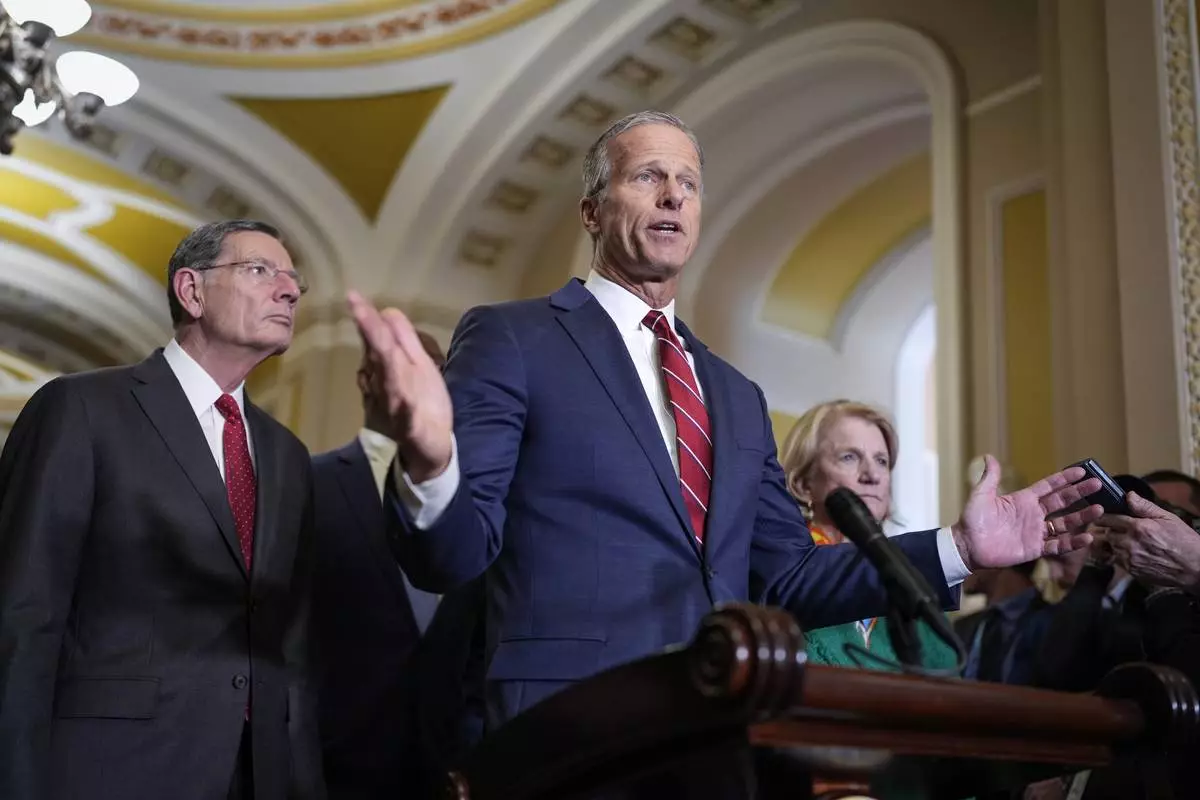
Senate Majority Leader John Thune, R-S.D., joined by Sen. John Barrasso, R-Wyo., the GOP whip, left, talks to reporters ahead of announcements by President Donald Trump on tariffs, at the Capitol, in Washington, Tuesday, April 1, 2025. (AP Photo/J. Scott Applewhite)
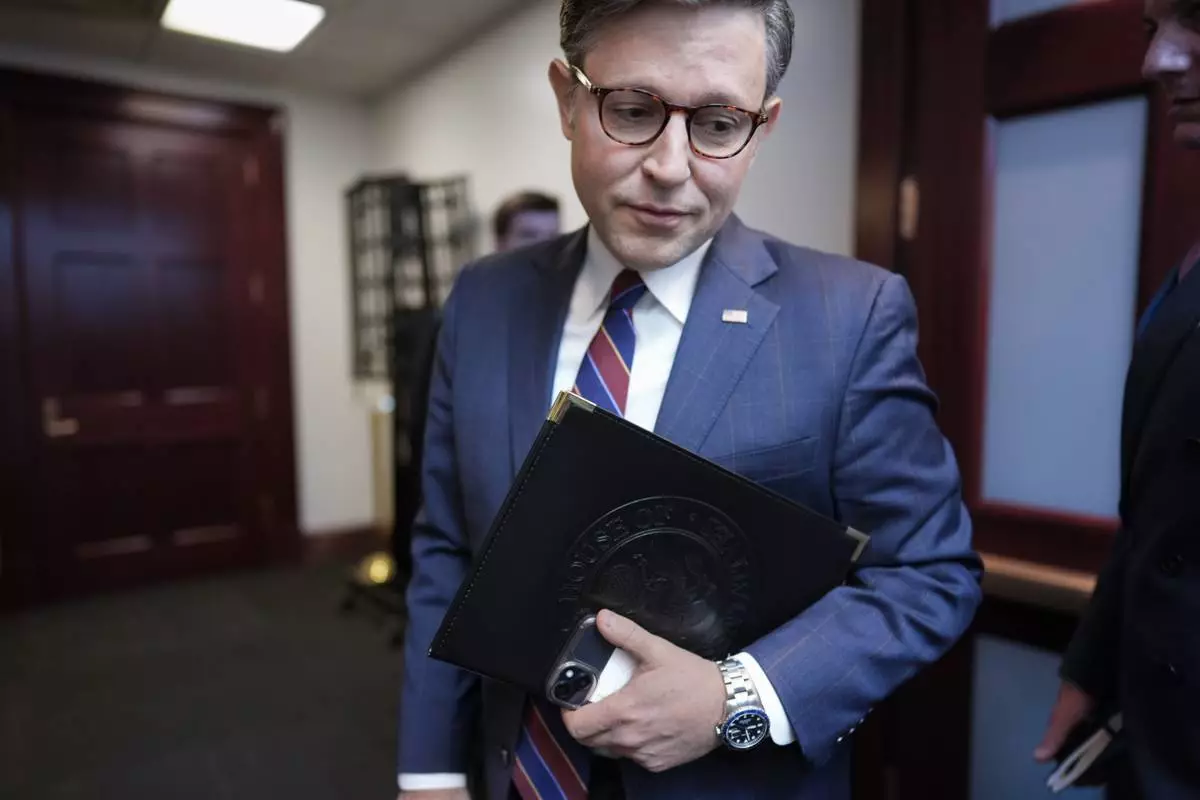
Speaker of the House Mike Johnson, R-La., talks with reporters as he arrives for a closed-door strategy session with fellow Republicans ahead of announcements by President Donald Trump on tariffs, at the Capitol, in Washington, Tuesday, April 1, 2025. (AP Photo/J. Scott Applewhite)
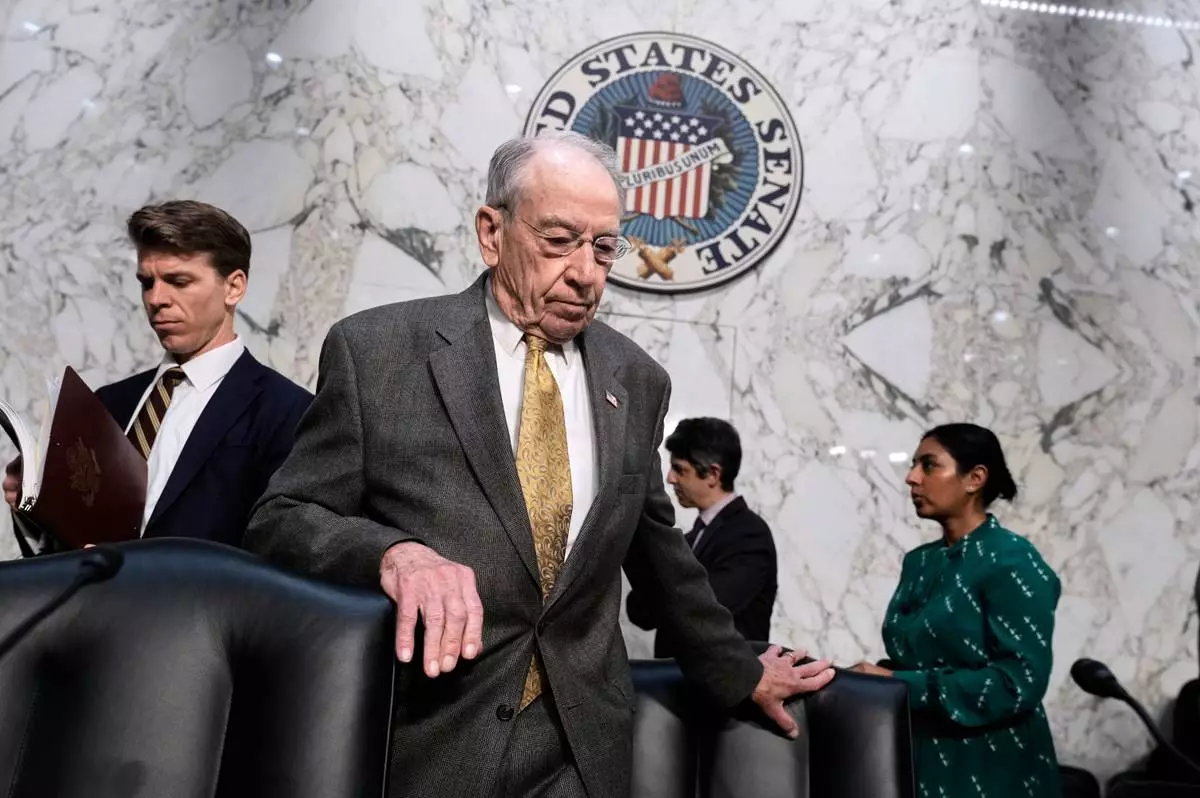
Senate Judiciary Committee Chairman Chuck Grassley, R- Iowa, takes his seat as the panel meets to consider prescription drug pricing and other measures, at the Capitol in Washington, Thursday, April 3, 2025. (AP Photo/J. Scott Applewhite)











